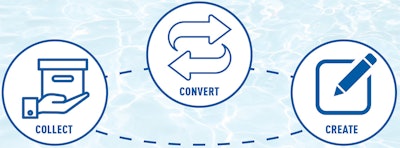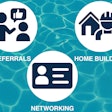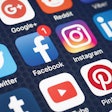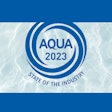
I don't know if this reflects the current state of the industry for pools, but the state-of-the-art goal in marketing would be “Lifecycle Marketing.” That’s a target we should all be striving for.
Lifecycle Marketing refers to the process of providing the right kinds of communications and experiences to your target audience based on where they are in their relationship with you. Your marketing messages (and how you communicate them) should change as they move from (1) prospects to (2) customers, and then (3) advocates, based on what they want, need and like.
Therefore, to truly achieve lifecycle marketing, you’ll need to analyze and finetune each of these three phases, as necessary:
1. The “Lead Collection” Phase.
2. The “Convert Leads to Clients” Phase.
3. The “Create Raving Fans” Phase.
PHASE 1: LEAD COLLECTION
In this phase of Lifecycle Marketing, you want to target, attract and capture the contact info of your ideal clients. But to target the right people, you’ll first need to identify and define your ideal customer.
Take a look back at your best clients over the last 20 years. Which ones were your favorites? Why? Were they more profitable? Easier to work with?
Whatever the reason, make a list of your “ideal customers,” then ask yourself:
1. Where do they live?
2. How old are they?
3. What is their family situation?
4. To which generation do they belong?
5. What is their highest level of education?
6. What is their job title?
7. How much money do they make?
8. What else do they all have in common?
Once you understand what your ideal client looks like, then we have to figure out where to find them, and how to attract them.
1. Where do they shop?
2. Where do they socialize?
3. What social media do they use?
4. What other media do they use?
5. What are their common frustrations?
6. What do they really want from a company like yours?
Once we understand their common problems and motivations, and how and where to reach them, we can start “talking their language” about what’s important to them. Use hot-button based headlines and body copy to get their attention. You may want to create a downloadable “lead magnet” that promises to help them solve their problems, or achieve their goals.
This could be a simple E-book or report, or a checklist, or a video (or a series of videos) that will help them with their journey.

Then, with a simple webform, you can capture their basic contact info, and start the process of ongoing marketing to this new lead.
Ideally, this would be handled with an in-house CRM system that allows you to:
- Add a custom landing page to your website, with a simple webform that will quickly and easily capture the leads.
- Automate the messaging and data entry.
- Make it easy for the prospects to book appointments with you.
- Help you view and manage your sales pipeline.
You should also make adjustments to your website’s homepage and other content, if it doesn’t resonate with what you’ve identified as your ideal target client.
PHASE 2: CONVERT LEADS TO CLIENTS
In this phase of Lifecycle Marketing, we want to convert these leads into clients. This is your opportunity to educate your buyers about your products and services. It’s up to you to guide them and educate them properly, so they see you as a business they can trust.
For prospects who aren’t actively meeting with you, you can accomplish this with email lead nurturing. This is where you consistently educate your prospect in the background, and gently lead them to the point where they are ready to meet with you, and make a purchase (or at least take the next step).
When I say “in the background,” that means NOT by the sales people, but by an automation system. Your designers and sales reps are far too busy working with “now buyers” to worry about the longterm nurture of future buyers. That’s what marketing is for.
More commonly known as “drip marketing” (or “Chinese water torture,” as I like to call it), you should continue to drip, drip, drip messages on these people until they buy, or until they die.
When you’re presenting a proposal, make sure your proposal summarizes your business’s strengths by emphasizing how your offering is different from and better than that of your competitors. It should address the reason the lead signed up in the first place. And it should be an easy decision for leads to accept your offer, because you’ve already built that trust, and given them reasons to be excited about you.
PHASE 3: CREATE RAVING FANS
In this phase of Lifecycle Marketing, we want to impress our clients by delivering on our promises and exceeding their expectations. This then allows us to multiply our business through their referrals, reviews and endorsements.
Obviously, anything you can do to systematize your method of delivering services will improve your chances of impressing your clients, and making sure they consistently get everything they were promised.
Remember that in business relationships, especially big ticket items, it’s not just about the sale, but the interaction and the trust that is built between you and the client. Strive to be the advocate for your customers, and the company they can turn to when they’re looking for reliable service and results.
This is an opportunity to go above and beyond for your customers, sometimes with just simple little measures, such as proactively notifying them (automatically, ideally) through every stage of construction, and also through the startup. And after the pool is finished, something as simple as checking in every six months (again, automatically, via text or email) can establish you with a reputation as a pool company that really cares about their clients.
I’m also a big fan of an automated “Happy Swimming Pool Anniversary” greeting that goes out to every new pool owner on the anniversary of the day that their pool was finished. They may have forgotten what day it was, but your automation shows that you remember, and thus, they remember you for basically the rest of their lives.
It’s also a great opportunity for upselling additional services and products (if you offer such things), and maintaining a powerful referral relationship for life. You can also implement loyalty programs for your most devoted customers to keep them coming back. After all, loyal customers are already spending money with your business, so why not have a loyalty program in place? It will further solidify their loyalty, and can also impact the way they consume your products, and how frequently.
You can also create a referral landing page, making it simple for your customers to find where they can leave reviews, testimonials and referrals. You can include a link to the referral page in your emails and invoices, or send it in an automated message at a later date. Just be sure to bring the program to your customers’ attention, because your clients may not even be aware the program exists.
This is where great referrals and fivestar reviews come from. And that’s the state of the art for marketing in the pool industry!
Brett Lloyd Abbott is the founder and CEO of Pool Builder Marketing LLC (www.PoolBuilderMarketing.com), a marketing consulting agency that works exclusively with swimming pool builders, pool service companies and high-end landscape professionals throughout the world. He is a frequent keynote speaker and leader of workshops and seminars.
This article first appeared in the May 2022 issue of AQUA Magazine — the top resource for retailers, builders and service pros in the pool and spa industry. Subscriptions to the print magazine are free to all industry professionals. Click here to subscribe.











































